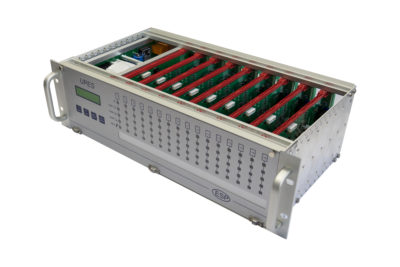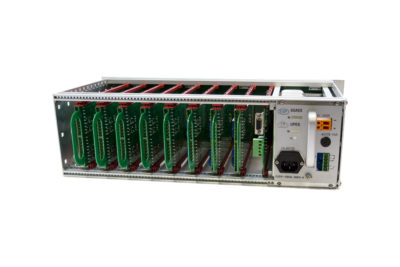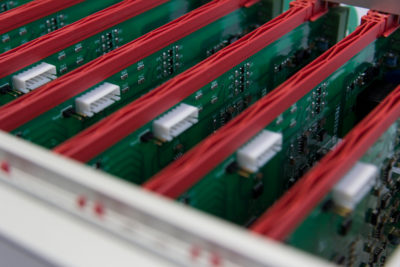UPES
Controllers
UPES
ESP Safety’s UPES Multi-Channel Controller offers maximum flexibility to users as a standalone, rackmount, independent control system that can also interface with PLC or DCS systems. The UPES advanced microprocessor-based monitoring system is compatible with all of ESP Safety’s flame and gas detectors. The UPES is available in two different options: analog 4-20mA signal and digital, RS485 signal. Up to 16 devices can be connected to the UPES analog version using 4-20mA signal output from the field devices. Up to 128 devices can be connected to the UPES digital version using the RS485 signal output from the field devices.
The UPES can be used at facilities for monitoring and detecting gas concentrations and flame conditions from the field. It will signal an alarm when the programmed threshold levels for the gas concentrations are reached with an LED for each alarm level and an optional sound alarm.
The UPES centralizes detectors from the field and acts as the bridge between warning systems, automatic sprinkler systems, ventilation systems, and emergency shutdown controls.
Three programmable alarm relays
Compatible size
Up to 128 devices
Up to 16 data channels
Electrical Specifications
Input Voltage: 110VAC or 220VAC power supply and 24VDC from 18 to 32 VDC
Signal Outputs: RS-485 Modbus RTU compatible with PLC’s, SCADA, & DCS systems, 4-20 mA analog output, Relays (dry contact) with programmable alarm level and one relay for fault condition
Power Consumption: <300VA
Mechanical Specifications
U19 rack mount controller
Ingress Protection: IP54
Operating Temperature: -40°F to +158°F (-40°C to +70°C)
Storage Temperature:
Humidity: Up to 95%, Non-Condensing (withstands up to 100% reative humidity for short periods)
Dimensions: Width 19″ (482 mm); depth 9.3″ (266 mm); height 5.19″ (132 mm); standard block type 3U19”
Weight: 19lbs
- Drilling and production platforms
- Shipping tankers, freighters, and other vessels
- Fuel loading facilities
- Refineries, bulk terminals, and tank farms
- LNG/LPG processing and storage facilities
- Compressor stations and pipeline facilities
- Petrochemical, paint, and fertilizer plants
- Power plants and gas turbine facilities
- Transportation facilities (airports and subways)
- Oil and gas fired boilers / furnaces
- Environmental regulation monitoring



